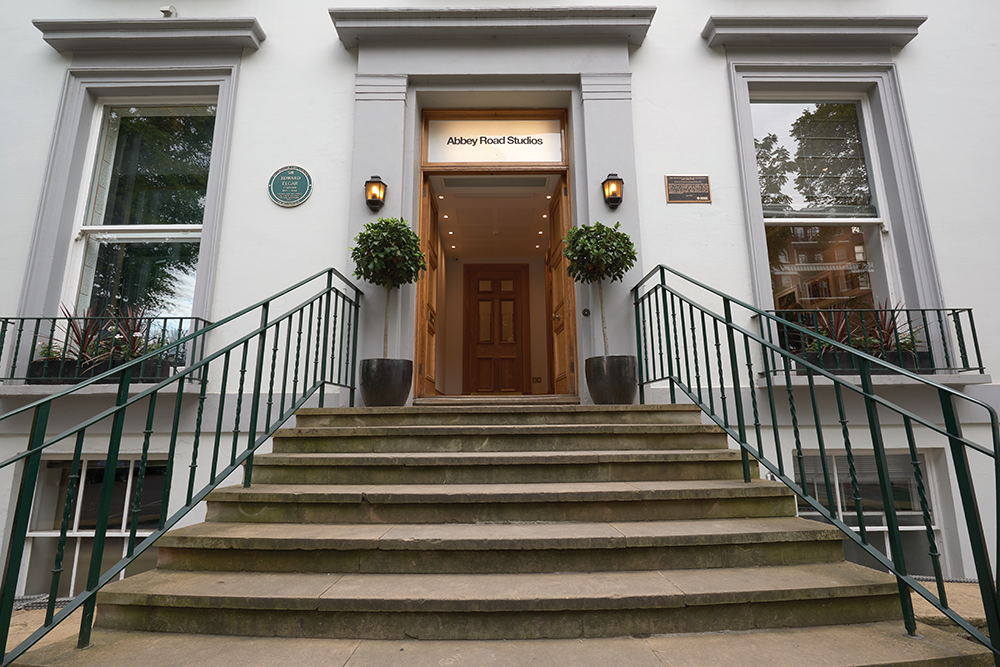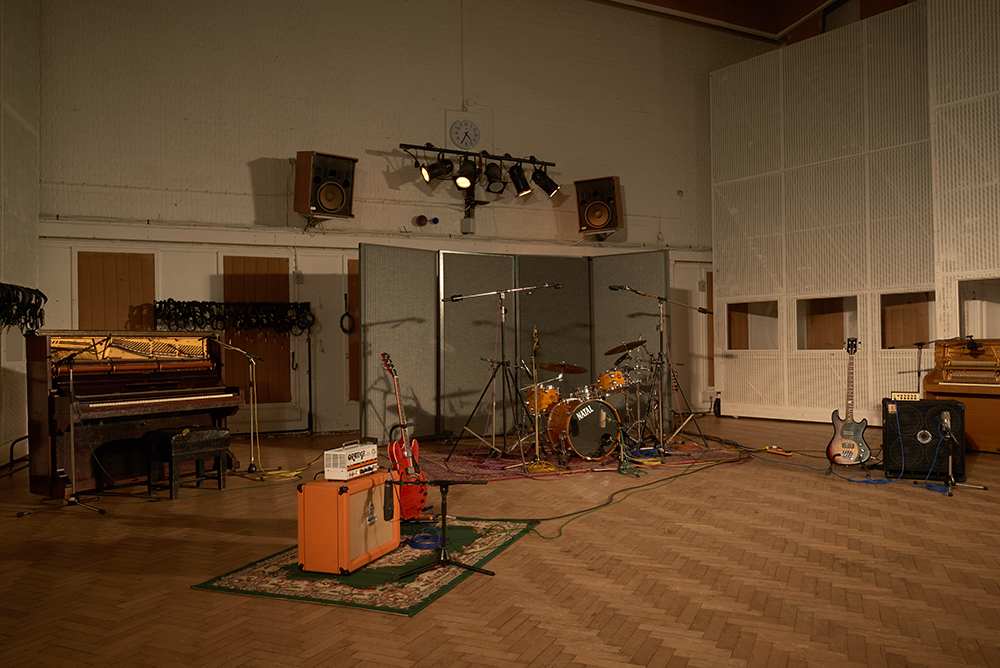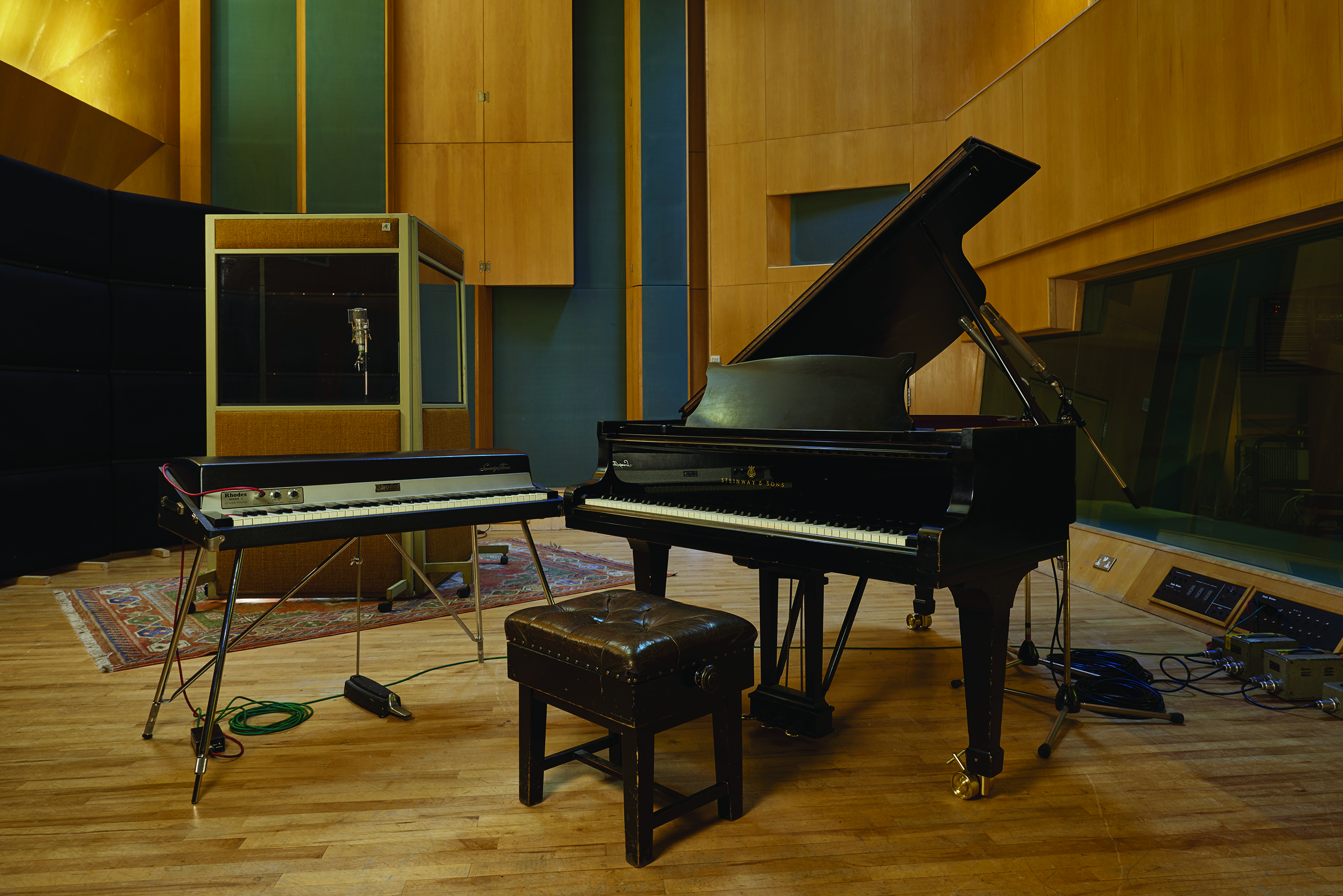Abbey Road: Access All Areas
How do you fancy recording and possibly even working at Abbey Road Studios? It’s not as distant a dream as you might think. MusicTech gains exclusive access to the incredible facility to see two all-new studios that we can all book – plus the iconic Studios 1, 2 and 3, where everyone from The Beatles […]
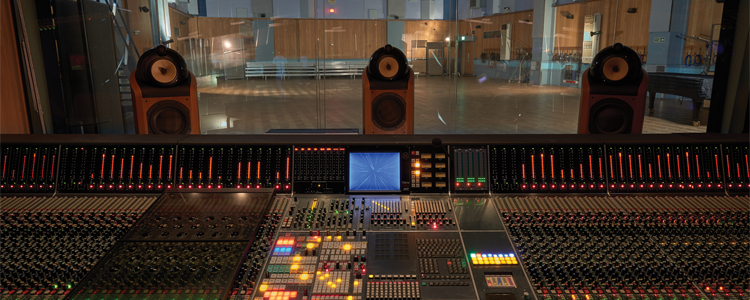
How do you fancy recording and possibly even working at Abbey Road Studios? It’s not as distant a dream as you might think. MusicTech gains exclusive access to the incredible facility to see two all-new studios that we can all book – plus the iconic Studios 1, 2 and 3, where everyone from The Beatles to Radiohead recorded iconic albums. We also speak to senior recordist John Barrett, who talks us through his career at the incredible facility…
“Good morning, gentlemen. Glad to see you all. Very light programme this morning. Please play this tune as though you’ve never heard it before.”
The words from the first recording made in Studio 1 at Abbey Road Studios (or EMI studios as it was) back in 1931. They were spoken by Sir Edward Elgar, addressing an orchestra about to play Land Of Hope And Glory for the grand opening of the studio. As MusicTech is about to find out, with a rather exclusive (and very early morning) tour of Abbey Road, it was rather different back then.
Elgar’s orchestra – The London Symphony – was surrounded by Art Deco wall coverings and palm trees (yes, palm trees) and on a stage. Studio 1 was a glamorous performance-based studio, far away from the space in which soundtracks to films like The Hobbit and the Harry Potter series are recorded today. Yet the facility constructed back then shares a lot with what is there now – not least the size and scope of the the current main Studios, still 1, 2 and 3, as they were back then – although, as we’ll see, there are a lot of very recent additions, including two brand-new studios.
The original plan to turn an ordinary (if vast) London townhouse into a set of studios was hatched in the summer of 1928 by Captain Lawrence Trevor Osmond ‘Ozzy’ Williams, a director of The Gramophone Company, who saw the house and huge garden as perfect for a place to build a facility for the then-growing British music scene. The Gramophone Company bought the building in 1929. Although Williams died in the summer of 1930 and didn’t see the project through, it was finally completed in November 1931. The Gramophone Company had since become Electrical Musical Industries (EMI) after merging with Columbia: EMI Studios was born.
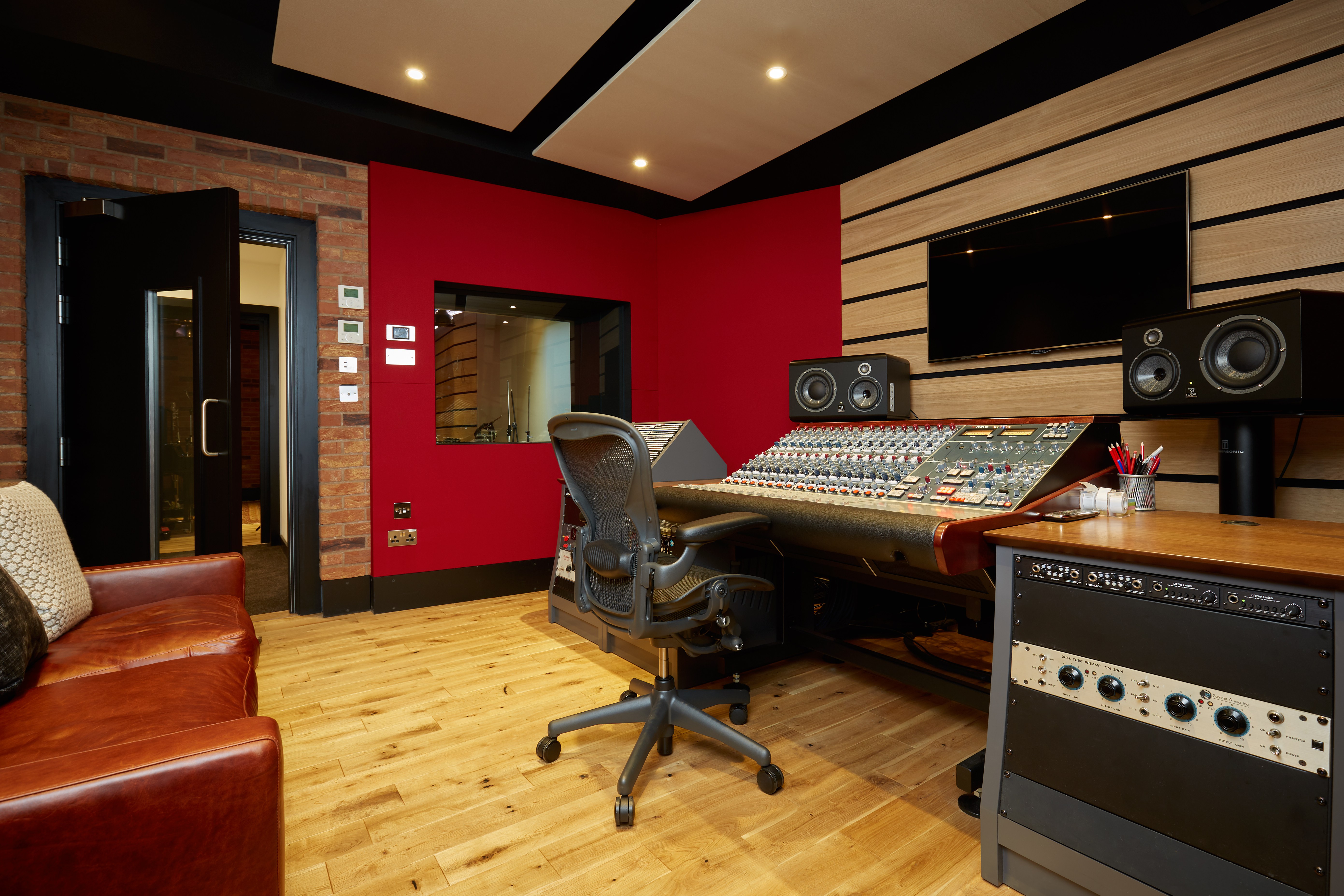
“Nothing like it existed back then,” says Kayla Hopkins, Abbey Road’s facilities coordinator, at the start of our tour in Studio 1. “They used to record in concert halls and churches, which is why this perhaps sounds like one. It looked completely different, because they didn’t really know how to build a recording studio, so replicated it to look like a concert hall. They had a big stage with Art Deco on the walls – it was quite a fancy-looking space. There was audience seating, as they’d expect audiences to turn up to recording sessions. Funnily enough, for that inaugural Edward Elgar session, not that many people showed up…”
Abbey Road’s incredible microphone collection
“We’re famous for our microphone collection,” says Kayla.“We have over 800 and again, we don’t charge extra to use any of them. We have everything from vintage to modern-day ones. EMI used to make microphones as well as consoles and other equipment and we found out that we still owned the original King George microphone [from the speech made in 1939 – see main text]. Our microphone guru has worked here for over 40 years and he managed to get it going again – he fixes things with parts that he has kept over the years – and they used it in the film The King’s Speech.
Here’s the list of all of the best mics at Abbey Road in as manageable format as we could make it!
- 2 x AEA Ribbon R84
- 119 (that’s 119) x AKG – from the C12 to the D707 and everything inbetween
- 21 x Beyerdynamic M 88, M 160 and M 201
- 34 x Bruel & Kjaer (DPA) 4003, 4006, 4007, 4011 and 4015
- 1 x Brauner VM1
- 1 x Calrec CM1050C
- 5 x Crown PZM-30GPB
- 23 x Electro-Voice RE15, 16, 18, 20, 55 and EV 1777
- 2 x EMI (Ribbon) RM-1B
- 2 x Gefell UM-92.1S
- 238 (yes really) x Neumann – from the M 50 to the SM 69, it’s fair to say Abbey has everything this company has made
- 7 x RCA (Ribbon) 3043, BX-44 and DX-77
- 5 x Royer R-121 and SF-24 (stereo)
- 8 x Sanken CU-41 and CMS-2
- 53 x Schoeps – from the MK 2 to the MSTC 5
- 53 x Sennheiser – from the MD 409 to the MKH 40
- 58 x Shure – from the Beta 57A to the SM61 including 15 x SM57s
- 10 x Sontronics – from Apollo to the Sigma
- 1 x Sony EMC-22P
- 28 x STC/Coles 4021E, 4032E, 4033 and 4038
- 1 x Telefunken M12F
- 3 x Vitavox B50 and B54
Studio 1 is the biggest of the studios at Abbey Road. It was designed to hold a complete orchestra, since that was the popular music of the time of its construction, and Ozzy Williams had obviously spied the vast grounds of Number 3 Abbey Road as being the perfect fit. “Yes, this was actually the garden of the original house,” says Kayla, “and that’s what gets people when they come here. It’s like the TARDIS – they don’t realise how far the building goes back, so how big the original garden was, but that’s what attracted Gramophone to buy the property and they built Studios 1, 2 and 3 all at the same time.”
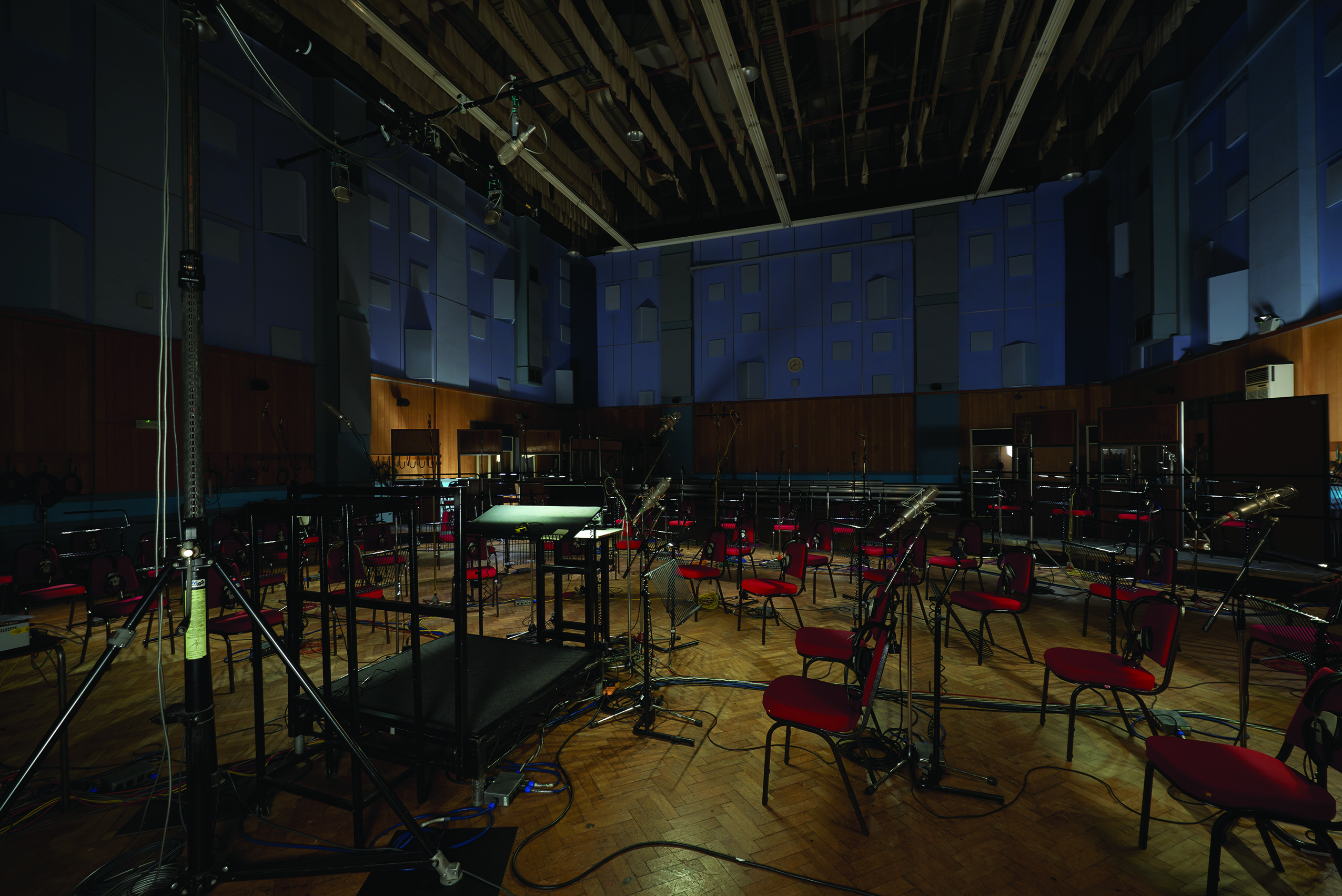
“Over the years, they made better use of the space in Studio 1 and got rid of the stage and the seating area. But now, looks-wise at least, it probably hasn’t changed much since the 70s. It has the same parquet floor which we don’t change, as if you did, you’d change the sound of the room. We don’t varnish it or anything like that and that’s why there are so many stains!”
“You can fit a 100-piece orchestra and a 110-piece choir at the same time,” Kayla says. “It’s a squeeze, but it’s do-able. Back in the 30s, orchestral music was massive, so all the big orchestras were in and out of here, all of the time.”
Yehudi Menuhin recorded Elgar’s violin concerto, and cellist and composer Pau Casals recorded two selections from Bach’s Cello Suites. Later in the decade, the first non-orchestral recordings were made, including I Can’t Give You Anything But Love by jazz singer Adelaide Hall and musician Fats Waller.
In 1939, as events turned darker, so did the output, including 1939’s recording of the radio broadcast of King George VI’s declaration of war against Germany (later dramatised in the film The King’s Speech) – and the studio was also used to record various propaganda messages. Glenn Miller made his final recordings in the studio in 1944, but the tone would lighten somewhat with the arrival of Cliff Richard and the sound of pop in the 50s. But the arrival of this new form of music could have meant the death of Studio 1, as Kayla explains…
“As pop and rock music came in the 1950s and 60s, the classical side started to fizzle out and we had a mobile recording unit that would go out on location to record them in Munich or Vienna. So Studio 1 lay empty for a long time and there were plans to knock it down and turn it into a car park with smaller studios.
[Modula id=’5′]
But the boss at the time in the 70s veto’d the idea, because there aren’t really any other spaces of this size that can house an orchestra in the UK, so they struck up a partnership with a company called Anvil, who used to do all of the movie scores for films – so that’s when we started to do film scores, which is quite a big chunk of our business now.”
“The first film score was for Raiders Of The Lost Ark in 1981,” she continues, “and from then on, it’s just skyrocketed. We’ve done Lord Of The Rings, The Hobbit, the Harry Potter films, Star Wars, some of the Marvel films, and Alien: Covenant was done recently. Sometimes, we get booked years in advance, especially for the bigger films.”
We walk into the control room of Studio 1, complete with its massive Neve desk. “All of our desks in the main studios are analogue,” says Kayla. “This is a Neve 88RS that has been customised for our needs, which you won’t get anywhere else. This is 72 channels and not our largest desk.”
A very British tape recording
As we wander along the corridors, we see various pieces of vintage equipment ready for use: including one of the first ever recorders, the BTR, or British Tape Recorder…
The version 3 model, the BTR3, was specifically created for Abbey Road and only four were made. Over the years, some have gone, possibly in the great sale that Abbey Road did in the 1980s when it shifted a lot of gear during a time when everyone thought digital was taking over. However, this year, one was found and rehoused…
“We found one of the the BTR3s from the Beatles period,” Richard explains. “It turned up at Southampton University’s radio station. One of the presenters had Googled it and realised it belonged to Abbey Road and got in touch with us. So they gave it to us and Mirek Stiles went down and picked it up and in return, we asked their university band to come up here and record. Also the University radio show was broadcast live from here as a ‘Thank you’.”
Scattered around are several pieces of vintage equipment, including original vintage tape machines (“that still work and get used”), and a couple of upright pianos, one of which was used on several Beatles recordings. “We don’t charge extra to use any of this old gear,” says Kayla, revealing that anyone who books the studio can come in and use anything, even a piano that was used on a Beatles song! “Yes exactly, and if you really want to use the early tape machines, they can be cranked up, too.”
Richard Melville, Abbey Road’s PR manager adds: “Oasis came in and spent some time exploring all of the vintage gear when they were recording Be Here Now. They were so entranced by the fact that you could just use all of the vintage gear, and spent a whole day just asking about the studio and getting a tour! We’re not elitist in that way, so you can book one of the new studios and ask to use anything. But don’t forget that it’s not just gear used by The Beatles. With this piano, you can say ‘as used by The Beatles’, but you can also say ‘as used in the Skyfall soundtrack’, or ‘as used in the Harry Potter… soundtrack’, as they’ve all taken on a life beyond The Beatles.”
And that’s a point which we’ll come to. Abbey Road itself has recently had so much investment – and is now so diverse in output and operation – that it has taken a huge leap on from the Fabs. But it’s the wrong time to cover that now, as we open up the door to Studio 2, the ‘Beatles Studio’…
From stereo to demix at Abbey Road
EMI became famous for designing its own gear, from those TG desks to microphones. The development continues now, but as Richard explains, it started with stereo…
“Alan Blumlein developed stereo sound at Abbey Road. He did a lot of experiments in the EMI offices in Staines, but the supplementary work was done here, so stereo and double- tracking was consequently developed here. And the technological developments continue to this day, like the ‘deMIX’ process – which is one of Abbey Road’s creations and used on the recent Ron Howard film Eight Days A Week.”
Richard goes on to explain how a systems analyst at Abbey Road called James Clarke developed the deMIX system, which allows you to separate each of The Beatles’ instruments and vocals from the noise of the crowds from old concert footage.
“He isolated everything they played and sang, separated it from the crowd and effectively created clean tracks to remaster. Now he is working on a lot of archive material on the back of the success of that software.”
I’m looking through 2
Of course, The Beatles and Abbey Road are about as intertwined in musical history as it’s possible to be. The band recorded everything there: from their debut, 1963’s Please Please Me to Abbey Road, arguably the band’s final album (Let It Be was released after it, but recorded before it); an album, of course, that would eventually become so synonymous with the studio that the facility would change its name from EMI to Abbey Road Studios in 1970. The band’s famous satellite broadcast of All You Need Is Love was produced in Studio 1, but Studio 2 is where most of the magic happened.
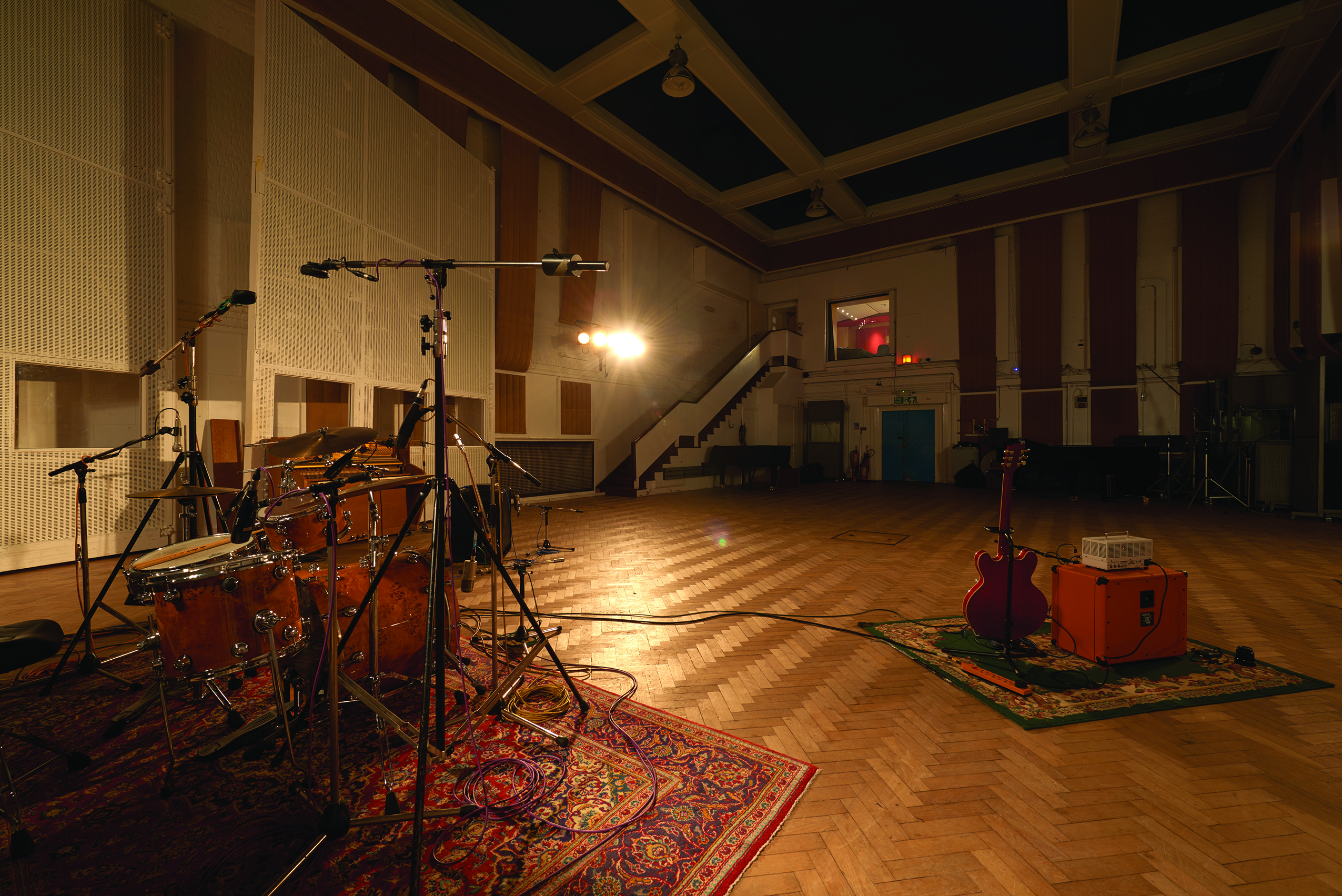
“So this is the one that everyone wants to see,” says Kayla. “The Beatles recorded 191 out of their 210 songs at Abbey Road, and the majority of those were done in here. They did some in Studio 3 – the ‘White Album’ and Revolver – but the rest were done here.”
Other huge bands have since recorded here as well, of course, and the room has become something of a flexible beast, which can host everything from product launches to concerts.
“Where do you start?” says Kayla. “Pink Floyd did Dark Side Of The Moon in Studio 2 and loads of big names, anyone and everyone – Oasis, Radiohead, Glenn Miller, Kate Bush – have recorded here. When they built it, it didn’t have these drapes, so probably sounded too similar to Studio 1, but in the 50s, they got the drapes in. Originally, they were made from parachute silk and stuffed with dried Nova Scotian seaweed! You can fit a smaller 50-piece orchestra in here, at a push. Looks-wise, it probably hasn’t really changed since much since the 50s. The speakers are the ones you’d recognise from The Beatles’ photos and they’re still working. We have such a great technical team that keep all of our old stuff and new stuff in working order.
“We also use it for events as well, as the room can now can be completely changed – because you can create more flexible booths. You used to have to use screens to split the room, but in June last year, we had these two booths built in; you can fold them back and change anything.”
Originally, the control room was at the lower level of Studio 2, but in the 50s, it was moved a floor up, so we climb the stairs to take a look. “The original control room went on to be a cleaning cupboard, but now it’s a booth,” says Kayla. “The desk in the control room is the same as the one in Studio 1, a Neve 88RS, but this one is 60 channels and, again, it’s customised for us.”
We notice an original EMI TG12345 sitting in the corner. “It is working,” says Kayla. “If you see a piece of vintage gear out and about in any studio, 99% of the time, it’s in working order. This is the Mk 2 from the 1960s. The Pink Floyd one sold for ridiculous money, over a million.”
As we leave Studio 2, there’s just time to examine an original Abbey Road echo chamber at the back of the studio – a tiled cell, resembling, if we’re honest, a toilet without the ‘facilities’.
“We haven’t had this one emulated in software,” Kayla explains, “because we want to keep some things exclusive. You wouldn’t record anything in here, but you’d play something out here and record the sound of the room – it’s effectively how they did reverb, back in the day.”
Get tracks
Here are just 10 of the iconic tracks associated with each studio. There’s an unofficial Spotify playlist for each studio available at www.abbeyroad.com…
Studio 1
- Edward Elgar And The London Symphony Orchestra – Pomp And Circumstance March No.1
- The Beatles – A Day In The Life
- Cilla Black – Alfie
- Paul McCartney & Wings – Live And Let Die
- John Williams – Raiders March
- Ryuichi Sakamoto – The Last Emperor
- Massive Attack – Unfinished Sympathy
- Danny Elfman – Remains Of The Day
- Thomas Newman – Skyfall
- George Ezra – Me & You
Studio 2
- George Formby – The Window Cleaner
- Adele – Skyfall
- Cliff Richard & The Drifters – Move It
- Bernard Cribbins – Right Said Fred
- The Shadows – Apache
- George Harrison – My Sweet Lord
- The Beatles – Let It Be
- David Bowie – Absolute Beginners
- Muse – Feeling Good
- Radiohead – Sulk
Studio 3
- Mrs Mills – I Do Like To Be Beside The Seaside
- The Beatles – Tomorrow Never Knows
- Pink Floyd – Shine On You Crazy Diamond
- Chesney Hawkes – The One And Only
- Radiohead – My Iron Lung
- Spice Girls – Viva Forever
- Jamiroquai – Deeper Underground
- Florence + The Machine – What The Water Gave Me
- Lady Gaga – Born This Way
- Brian Eno – Wire Shock
Wish you were here
And so to Studio 3. If Studio 2 was The Beatles’ one back in the day, then this was Pink Floyd’s…
“Yes, they were here at the same time as The Beatles, so The Beatles had 2 and Pink Floyd had this,” says Kayla. “Wish You Were Here was done here, but it was completely different in terms of layout then, with the control room in a different place. They did a lot of comedy shows in here, too, because it’s a smaller size so lends itself more to vocals. But you could fit a string quartet in for recording if you wanted. The cool thing is now that you can change the sound of the room,” she continues. “So you can adjust it to be a bit more reverberant, just by flipping the wooden flaps over.
The booth used to be a mirrored drum room – that was popular in the 80s, when big drum sounds were fashionable. It was like an empty bathroom with a tiled floor and floor-to-ceiling mirrors – very cool, but it was just too loud, so ended up getting used for storage. Last year, they made half of it the live space for the new Front Room studio, and the other half was used to make a smaller live room here.”
In with the new
And talking of the new studios, it’s time to visit the two new recording spaces that only opened this year; part of a major expansion for Abbey Road making it more accessible. Extra facilities include a shop in number 5 Abbey Road, which used to be just be for band accommodation. Also here is the HQ for the Abbey Road Institute, a college that is part of an ever-diversifying Abbey Road industry.
It’s all happened because EMI was bought by Universal in 2012, which has invested a lot to keep the studio relevant in today’s fast-moving music and film businesses. “The new MD Isabel Garvey is young and enthusiastic and pushed for the new studios,” says Richard. “Abbey Road has always been at the technical cutting edge, but the new studios are for a changing industry and new musicians with new ideas. Some people associate us with vintage stuff, but we want to be seen as state of the art as well.
“It’s not just about The Beatles, but the sound of the rooms, the cutting-edge gear we have and, most of all, the expertise of our in-house engineers. Rather than freelance, they all work here full-time and can be called in on any session.”
[Modula id=’6′]
The Gatehouse is the first studio we see, which Abbey Road describes as: “A modern tracking studio which includes a multi-surfaced live room and an isolated vocal booth, along with a large control room and mixing desk”.
“The new studios were completed this year in March and are the more affordable studios at Abbey Road. They’re already getting booked up,” says Kayla. “They used to be editing rooms, so we turned them into studios. It’s a more intimate setup, but still has lots of the vintage outboard gear.
“Again, the clients using the new studios have access to any vintage gear at Abbey Road.”
But, importantly, the new studios are also geared up for users of Ableton Live and Logic, as well as the more traditional Pro Tools – as equipped in the older studios at Abbey Road. This means that they will appeal more as places to compose as well as record, as Richard confirms when we reach the other new studio, called The Front Room.
“This is more for mixing and editing as well as recording – it’s very flexible,” he points out. “We’ve had a real mix of different people, bands, people recording just vocals or instruments, electronic musicians…It’s a good stepping stone, if you’re maybe a younger musician who might be more intimidated by one of the larger rooms.”
We have a quick look at the Penthouse Studio, an older studio that was installed in the 1980s and is now fully digital – the only one of Abbey Road’s studios that is – before reaching the new jewel in the Abbey Road crown, the Mix Stage. This is a state-of-the-art room for dubbing the film-score music usually recorded in Studio 1 direct to picture. Not only does it have a 44-speaker Dolby Atmos system (the one commonly used in cinemas today, although it also handles iMax too), but there’s a mini cinema installed, complete with comfy seats. No popcorn, though…
“Usually, we would have recorded and mixed an orchestra for a film score in studio 1 and then it would get sent to an outside dubbing theatre to get mixed to the picture,” Kayla explains, “so we built this space to do it all under one roof – so we have the cinema here so the director can sit and watch the film to the music and mix the music and dialogue.”
The Mix Stage might be aimed at film directors and composers, but the rest of Abbey Road is open for anyone to use, with the new studios appealing to those who possibly can’t afford the fees demanded by Studios 1 to 3. Indeed, they start at £500 per day (£600 with an engineer). So if you want that Abbey Road magic, you could get the Waves software emulations or Chandler hardware emulations and follow our tutorials, which are coming soon. Or you might just be able to afford the real thing and go to Abbey Road itself!
Click here to continue